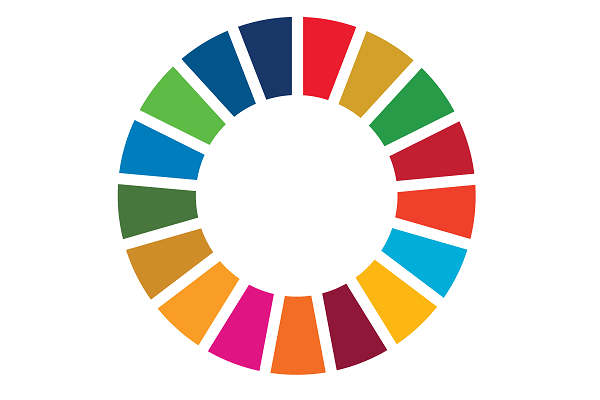Sustainable Development Goals
What is Agenda 2030?
Agenda 2030 is a non-legally binding but universally valid agreement of all 193 member states of the United Nations. It provides a frame of reference for international and national efforts to address global challenges. This framework, set in 2015, contains 17 goals, the so-called "Sustainable Development Goals" (SDG), with a total of 169 subgoals. Their message is that the entire world community, from governments to civil society and the private sector, is called upon to work together to solve the world's pressing challenges.
What exactly does Agenda 2030 call for?
As members of the international community, we in the Alpine countries are increasingly feeling the negative consequences of our consumption on a social, ecological and economic level. Biodiversity is increasingly being lost, social tensions are intensified by growing social inequality, and extreme weather events are on the increase. We need to drastically change our (Western) lifestyles and economies and orient our activities so that they contribute to the achievement of the SDG goals by 2030 - i.e. in eleven years' time. Addressing climate change and promoting sustainable development are two reinforcing sides of the same coin. Sustainable development can only be achieved together with climate protection measures. Many of the SDGs therefore also address the central causes of the climate crisis, such as industry and agriculture, tourism, mobility, production and consumption.
What does this have to do with the Alps?
The Alps are one of the largest contiguous natural areas in Europe, characterised by its specific and diverse nature, culture and history. They are a living, economic and recreational area for around 14 million people. Glaciers, snow and rain are essential for the supply of drinking water and for agriculture. As an Alpine community and part of the respective member states of the United Nations, we as Alpine inhabitants are also called upon to make our contribution, to deal with issues of demographic change, globalisation and energy supply, and to find solutions to upcoming problems - at both governmental and non-governmental levels.
What do governments and civil society contribute to SDGs?
Some Alpine states have already taken up the United Nations' sustainability goals. Slovenia, for example, has a "Roadmap 2013-2030" that was developed with the participation of civil society. In France, a general commission pursues the sustainability goals, but without the participation of NGOs. In Austria, 140 organisations have joined forces to form "SDG Watch Austria" due to a lack of a national implementation plan. "A strategic approach to Agenda 2030 at the highest political level must be on the agenda," says Annelies Vilim, one of the co-founders of this association. Switzerland has been drawing up a strategy paper on sustainable development in a four-year cycle since 1997. In 2015, following the adoption of Agenda 2030, it commissioned a national stocktaking exercise. In the Principality of Liechtenstein, the Office of Foreign Affairs is responsible for the SDG, but in the government programme these only appear in one sentence. Here, too, NGOs - including CIPRA International - have joined forces to link civil society initiatives on SGD with policy.
Are the SDG the measure of all things?
No - and yes. The Alpine Convention has existed for much longer than the SDG, namely since 1991. As a legally binding treaty of all Alpine states and the European Union, it promotes sustainable ecological, social and economic development in the Alps. With its protocols and activities, the Convention makes a significant contribution to achieving the SDG. Although the Alpine Convention and the SDG are instruments of a different nature, they support each other: the Alpine climate target system 2050, for example, is explicitly oriented towards the SDG, the United Nations Framework Convention on Climate Change and the objectives of the Paris Climate Convention 2015. In addition, the newly established "Working Group on Soil Protection" of the Alpine Convention also refers to the SDG, as does the 7th Report on the State of the Alps "Natural Hazards - Risk Governance". "In the coming years, we aim to achieve an even stronger synergy with the SDGs," says Alenka Smerkolj, Secretary General of the Alpine Convention. "The Alpine Convention is indeed one of the few international organisations that already implements many of the SDGs through its activities and projects".
And what comes after 2030?
With the expiry of Agenda 2030, the issue will not be off the table. The goal of a sustainable way of life and economy that gets by with fewer resources and at the same time enables us to live a good life will continue to exist, perhaps under a different name. To cope with this upheaval, we must take non-binding agreements and strategy papers as seriously as binding treaties. "We need new structures in which politics, administration, science, business and civil society can work together optimally," says Annelies Vilim. Dirk Messner, Director of the Institute for Environment and Human Security at the University of the United Nations in Bonn/D, put it the same way at the end of May 2019 on the occasion of the annual conference of SDSN Switzerland: "The crux is to coordinate interaction so that change can take place".


